Home
Creating a Sustainable, Low-Carbon Destination
Creating a Sustainable, Low-Carbon Destination
Millions of visitors come to the National Park each year to enjoy and benefit from its natural beauty, rich heritage and recreational opportunities.
People feeling connected to nature provides benefits not only for their wellbeing but encourages them to act in ways that are more likely to benefit the environment.
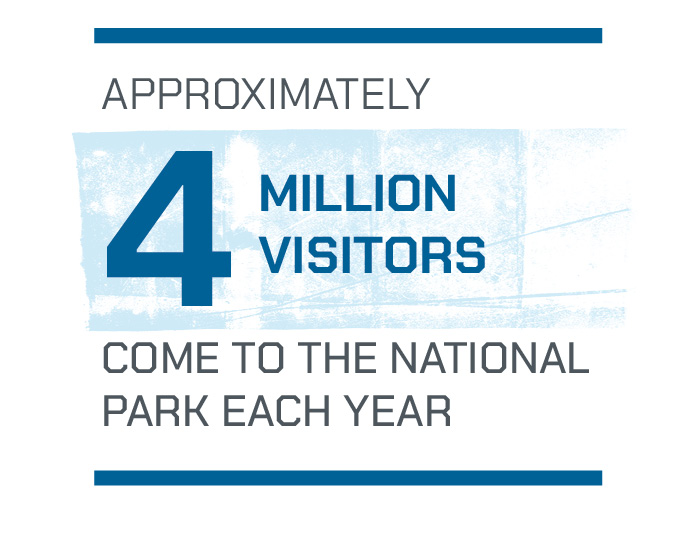 Post COVID-19, more and more people are enjoying the outdoors, with increases in activities such as hillwalking, paddleboarding and open water swimming. The proximity of the National Park to urban Scotland, combined with its special qualities, also provides significant employment and income opportunities, supporting the economy and communities of the National Park.
Post COVID-19, more and more people are enjoying the outdoors, with increases in activities such as hillwalking, paddleboarding and open water swimming. The proximity of the National Park to urban Scotland, combined with its special qualities, also provides significant employment and income opportunities, supporting the economy and communities of the National Park.
However, the popularity of the National Park creates pressures and challenges resulting in impacts on our natural environment and behaviours which aren’t compatible with the Scottish Government’s ambitions to become a Net Zero Nation by 2045. For example, the dominance of car travel for recreational day trips is a major contributor to carbon emissions of the National Park. Demand also currently outstrips supply of fit-for-purpose services and facilities to meet the needs of our visitors. We also know that while many more people are enjoying the outdoors, the visitor profile of those enjoying the National Park doesn’t fully reflect the diversity of Scotland’s population and more can be done to support people of all backgrounds to be able to benefit from the National Park.
As we emerge from the pandemic and face the challenges of the climate and nature crises head on, there is great opportunity to transform the National Park into a more sustainable, low carbon destination.
Creating a Sustainable, Low-Carbon Destination will need a focus on three main areas:
A series of objectives and actions have also been proposed to help meet our aims in each of these areas.
You can read more about each of these areas in our Draft National Park Partnership Plan 2024-29 or click 'Next' below to learn more about how we can transform the National Park into a sustainable, low carbon destination.
Connecting Everyone with Nature
What do we mean by Connecting Everyone with Nature?
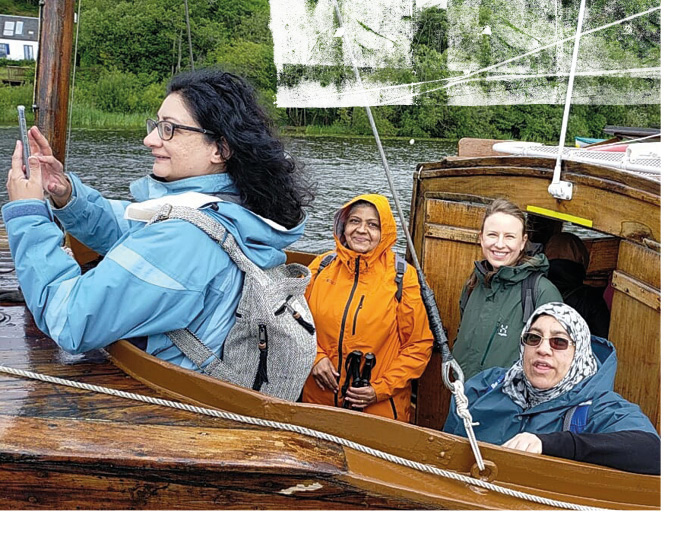 It is becoming widely accepted that the more connected someone is to nature, the more likely they are to have good health and wellbeing and to act in ways that will benefit the environment. That connection with nature can mean different things to different people, from taking in a view, to ensuring they take their litter home after a visit, to taking part in conservation volunteering. The National Park has an important role in providing opportunities for people of all backgrounds to do this.
It is becoming widely accepted that the more connected someone is to nature, the more likely they are to have good health and wellbeing and to act in ways that will benefit the environment. That connection with nature can mean different things to different people, from taking in a view, to ensuring they take their litter home after a visit, to taking part in conservation volunteering. The National Park has an important role in providing opportunities for people of all backgrounds to do this.
The attraction and benefit of enjoying the outdoors also opens huge potential for businesses, communities and our collective work to deliver for nature and climate and reach people who don’t currently access the National Park.
What is the current situation?
The National Park is an asset for all of Scotland, but the range of people currently visiting the area does not reflect the diversity of our society. For example, only 1 in 10 of respondents in our most recent Visitor Survey reported a long-term health condition or a disability. In contrast, 20% of people reported a long-term health condition or disability in the 2011 census.
This challenge is not unique to the National Park, nor is it new. According to recent Scottish Government research: “Since 2012, there has been a significant increase in the number of adults participating in outdoor recreation on both an annual basis and a weekly basis. However, increased participation has not been seen across all groups, such as those with a long-term illness or disability, or among minority ethnic groups.” There is an important opportunity over the next five years to ensure a broader spectrum of visitors to the National Park.
The National Park’s landscapes, natural environment and cultural heritage are the very reason there is a tourism economy. Spending on nature-based tourism is a growing area, nationally estimated to contribute nearly 40% of all tourism spend.
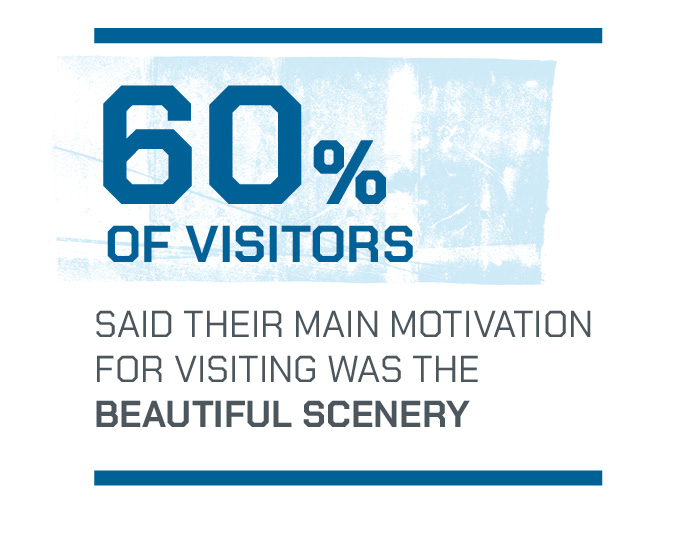
Wellness Tourism is another emerging global trend, with a 2019 VisitScotland Insight study finding that 42% characterised a wellness holiday as including “experiencing fresh air and being outdoors”, while “peace and quiet” came in at 41%.
However, the way that millions of people currently visit the National Park each year is not compatible with tackling the climate emergency and is resulting in impacts on our natural environment. To respond to this there needs to be a new type of tourism.
Tourism businesses within the National Park are increasingly aware of the special landscape in which they operate and the need to balance commercial challenges with the priorities of restoring nature and tackling the climate emergency. We are already seeing businesses work hard to reduce their environmental and climate impact, training their staff in the Park’s nature, collaborating to deliver connections with public transport and communities taking action to repair and enhance their local environments.
What could it be?
By giving visitors and communities a strong understanding of nature, they could feel more engaged and empowered to contribute to efforts to protect it. As a result, the National Park could be a high-quality destination for everyone to experience and help care for Scotland's fantastic landscapes and natural and cultural heritage.
Through the National Park’s Future Nature Route Map there is an aim to establish widely available, inventive engagement and education opportunities around nature. This could provide opportunities for all communities, including those groups which may be normally excluded, to learn about and experience nature in the National Park in exciting and informative ways.
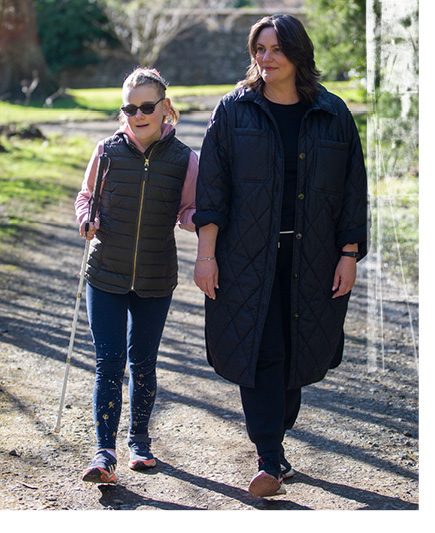
Tourism businesses in the National Park are well placed to position themselves to respond to the increasing interest in voluntourism, sustainable holidays, carbon-aware itineraries, locally sourced produce and eco-friendly accommodation. In doing so, the visitor economy could become more compatible with a net zero and nature-rich future, by offering visitors an experience which actively contributes to emissions reduction, climate adaptation and the restoration of nature.
Our aim by 2045
The National Park is a place where people of all backgrounds benefit from experiencing nature.
Use our interactive map to tell us where in the National Park you go to connect with nature.
Improving Popular Places and Routes
What do we mean by Improving Popular Places and Routes?
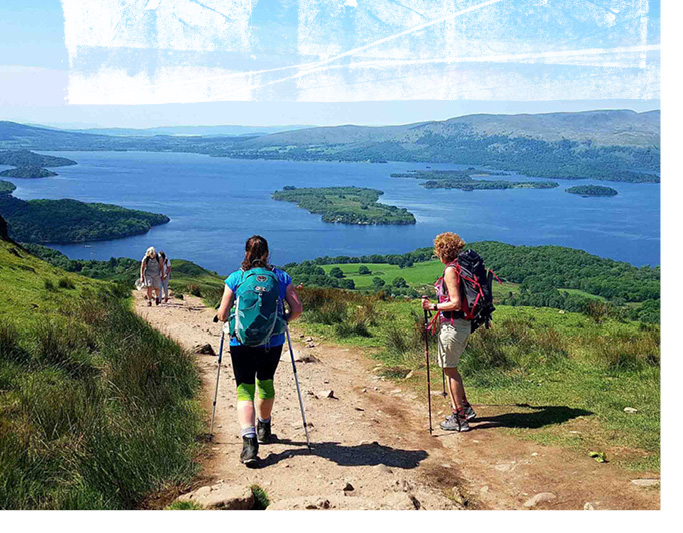 Despite the size of the National Park, certain places and paths are long established as popular places where visitors tend to cluster, while other areas have much lower volumes of people. Our hills, lochshores, villages and the long-distance routes, such as the West Highland Way, are well established and attract increasing numbers of visitors as people discover these places and experiences.
Despite the size of the National Park, certain places and paths are long established as popular places where visitors tend to cluster, while other areas have much lower volumes of people. Our hills, lochshores, villages and the long-distance routes, such as the West Highland Way, are well established and attract increasing numbers of visitors as people discover these places and experiences.
The numbers of people and cars going to the most popular locations on our busiest summer days shows the value people place in these diverse experiences. However, while extensive work has been undertaken to reduce and manage seasonal visitor pressures over the years, there are still impacts on our natural environment and the quality of life of our communities. As well as co-ordinated visitor management on the ground, we need to co-ordinate investment and strategically plan across all publicly managed visitor sites and routes to make sure we can meet changing visitor needs and expectations, where this can be achieved sustainably.
What is the current situation?
There is a well-established pattern of visitor activity in the National Park in terms of popular places and routes. As with any popular destination, there are tensions at times between local communities and visitors, for example in places like Luss and Balmaha, but also in other small but popular places.
Over the years this pattern has allowed us to collaboratively target investment, services and communications to support a positive visitor experience and, where needed, address visitor pressures in these areas. The National Park Authority and partner organisations have invested significantly in creating new routes, maintaining existing routes to a high standard, improving visitor sites and other infrastructure such as piers and pontoons. Byelaws are also in place in some areas for seasonal camping and on Loch Lomond providing a mechanism for enforcement when needed.
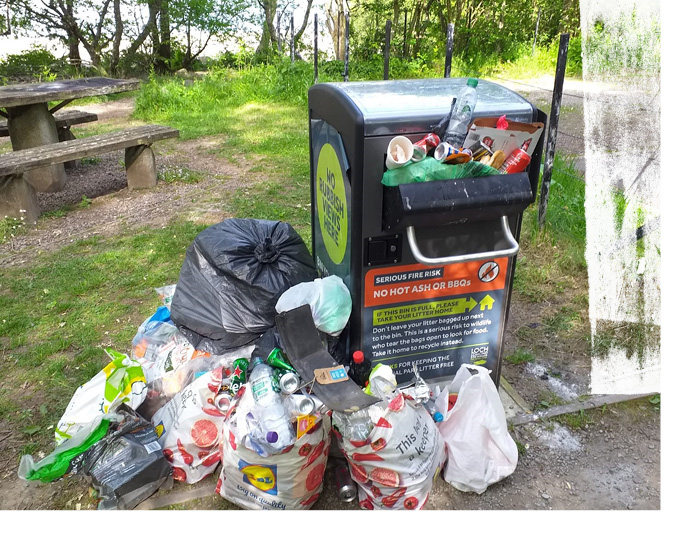 The pandemic was a significant ‘stress test’ on rural visitor destinations and recreational facilities across Scotland resulting in some negative visitor behaviours in our most popular, easy to reach places such as littering, toileting, illegal parking, congestion along with anti-social behaviours. These impacted on our communities as well as on other visitors.
The pandemic was a significant ‘stress test’ on rural visitor destinations and recreational facilities across Scotland resulting in some negative visitor behaviours in our most popular, easy to reach places such as littering, toileting, illegal parking, congestion along with anti-social behaviours. These impacted on our communities as well as on other visitors.
This experience brought stakeholders, third sector, businesses and communities closer together to accelerate action to increase visitor facilities, improve real time information and extend ranger patrols. This was supported by targeted national funding for ‘boots on the ground’ over the last three years.
However, it has also confirmed where long-term change is needed. Services, information and infrastructure need to improve so that the National Park is more accessible for everyone and to help our visitors reduce the impacts of their visit - for example, by choosing to travel by public transport rather than by car. This is a crucial part of becoming a Net Zero National Park, with visitor travel to and from the area being the largest (34%) of the six main categories of emission reduction targets.
The visitor sites and infrastructure in the National Park – car parks, toilets, piers, paths – both those managed by the National Park Authority and other organisations, were all largely established prior to the National Park being established in 2002. Climate change is also increasingly affecting our visitor sites and routes, including through increased rainfall damaging paths and bridges on the West Highland Way. While there has been investment in upgrades and improvements over the years, until recently there has not been a real joined up strategic approach looking across all public visitor sites in the National Park.
The National Park Authority is leading on a new Place Programme of planning and investment on its own visitor sites and supporting others to do the same. Strategic Tourism Infrastructure Development Studies covering all areas of the National Park are being prepared in collaboration with landowners, businesses, communities and partner public bodies and will drive a pipeline of improvement.
While our tourism industry supports a thriving local visitor economy, there is a need for continued collaborative work with the business community to support sustainable, responsible visiting for everyone. We have the potential now to capitalise on the experiences and legacy of recent years to improve and support how people experience popular places and routes.
What could it be?
A long-term collaborative and coordinated approach to visitor services and infrastructure, as well as managing pressures, could have huge benefits for visitors, communities and businesses as well as supporting climate and nature objectives.
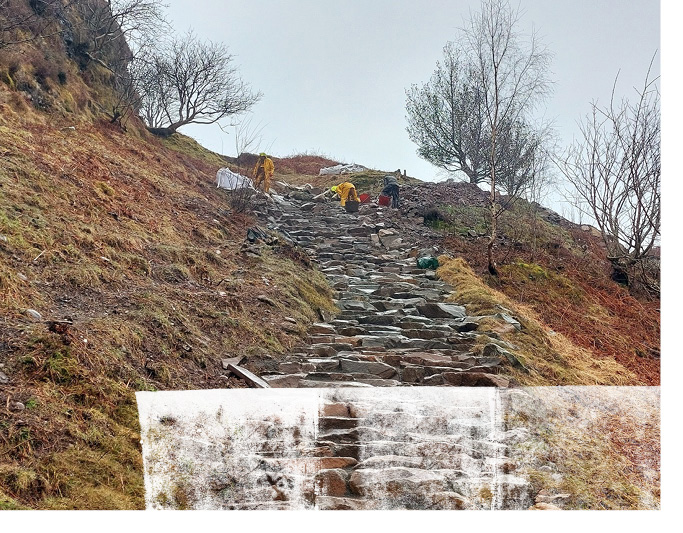 By providing a high-quality experience for visitors in popular places, through improved services and facilities with less impact on nature and climate, communities could also see a reduced impact on their everyday lives. A better designed, organised and managed network of visitor sites could make the delivery of visitor management services more efficient, by reducing enforcement issues.
By providing a high-quality experience for visitors in popular places, through improved services and facilities with less impact on nature and climate, communities could also see a reduced impact on their everyday lives. A better designed, organised and managed network of visitor sites could make the delivery of visitor management services more efficient, by reducing enforcement issues.
Local businesses could thrive by providing positive, enjoyable and sustainable tourism experiences, while at the same time supporting local employment and services.
This joined up approach could support visitors from all backgrounds to enjoy the National Park safely and responsibly with an increased awareness and understanding of their contribution to taking care of this special place.
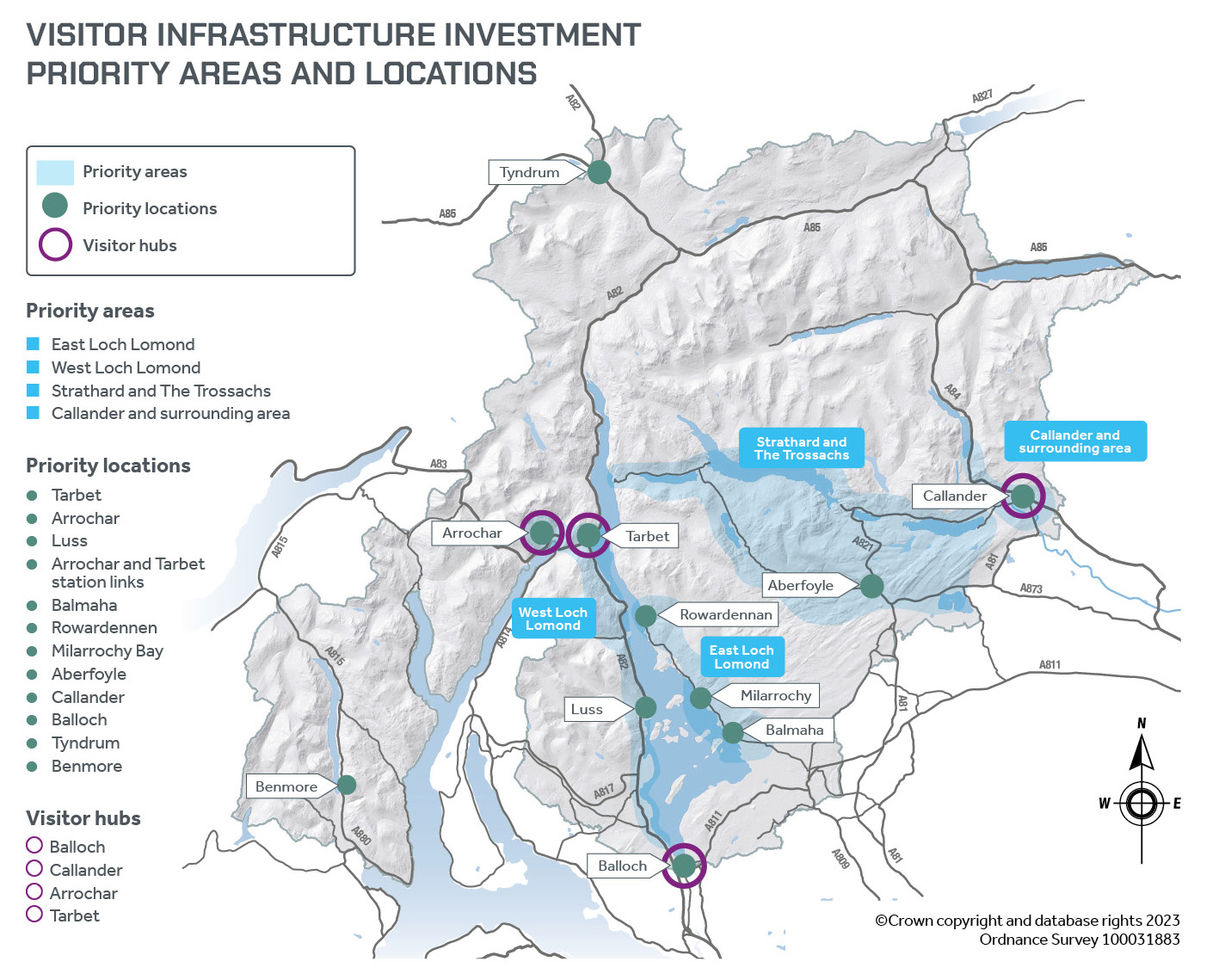 Key visitor hubs, such as at Balloch, Callander and Arrochar/Tarbet can provide more sustainable ways for people to travel to, from and within the National Park through improved and joined up sustainable and active travel options. Meanwhile, in less heavily visited areas, where priority has been given to non-motorised access and recreation activities, nature can recover more rapidly.
Key visitor hubs, such as at Balloch, Callander and Arrochar/Tarbet can provide more sustainable ways for people to travel to, from and within the National Park through improved and joined up sustainable and active travel options. Meanwhile, in less heavily visited areas, where priority has been given to non-motorised access and recreation activities, nature can recover more rapidly.
Our aims by 2045
1) People have a high-quality experience visiting the National Park and are able to use great services, facilities and routes with less impact on nature or contributing to climate change. Communities see fewer impacts of tourism on everyday life. Nature is recovering more rapidly in less visited areas, where priority has been given to non-motorised access and recreation activity.
2) Enjoyment of the most popular places and routes in the National Park is underpinned by holistically managed and resourced service delivery efficiencies and improvements for public service delivery. Ranger presence will help reduce footprint of visitors on climate and nature and promote responsible behaviours.
Use our interactive map to tell us which places or routes you enjoy visiting in the National Park and where any could be improved.
Low Carbon Travel for Everyone
What do we mean by Low Carbon Travel for Everyone?
We need to reduce the emissions generated by travel to, from and around the National Park while at the same time improving transport options for people visiting, living and working here.
To do this there needs to be a well-connected, dependable, and affordable system of public transport and active travel services, such as trains, shuttle buses, waterbuses and cycle routes. This system needs to provide a viable, attractive, and reliable alternative to the private car travel that has been the norm for many years.
Delivering this system-wide transformation of the National Park’s transport sector will play a crucial part in:
- Reaching net zero
- Addressing inequalities in accessing the National Park
- Managing visitor pressures
- Supporting the rural economy
- Supporting health and wellbeing
What is the current situation?
 Car-based travel dominates how people get to and around the National Park. 79% of visitors arrive in the National Park by car and 73% explore the area by car according to our 2019/20 Visitor Survey.
Car-based travel dominates how people get to and around the National Park. 79% of visitors arrive in the National Park by car and 73% explore the area by car according to our 2019/20 Visitor Survey.
Large parts of the National Park can’t be reached without a car and long-standing systemic constraints make travel mainly exclusive to car users. This results in high and ever-increasing volumes of cars which in turn brings high emissions, congestion, visitor management pressures and a non-inclusive recreational opportunity.
In terms of reducing the National Park’s greenhouse gas footprint and the transition to net zero, travel to and from the National Park requires the biggest change. The Footprint Assessment for the National Park completed in 2022 showed that visitor travel to and from the area is our single biggest source of emissions, totalling 290,978 tCO2e per year, nearly half of the overall footprint.
Anecdotally, the pandemic has seen a further shift from private cars being used for living and working to more leisure and recreation journeys. The policies and funding for reducing the emissions of leisure journeys are not as well developed as for travel for other reasons. This is only beginning to be discussed and considered at a national scale.
Public transport across the country and within the National Park is designed primarily for residents not visitors. A good example of the current system failure is that public transport provision to the rural visitor hotspot destination of Balmaha from Balloch has more capacity on a Tuesday morning in November than on a Saturday in the peak of the summer. Many local people, particularly young people, also feel public transport doesn’t meet their needs.
The issues we face here are not new but the strategic imperatives of the climate crisis and just transition, and the green recovery from the pandemic, bring the need for transformative action into sharp focus.
The National Park Authority is highly dependent on action by partners in grasping this opportunity, for example Local Authorities and transportation operators. There is also currently a skills gap, for example work on a Shuttle Bus Pilot in 2022 made clear the shortage of bus drivers across the country, particularly in rural areas. Addressing the issues will take a long-term, strategic and ‘whole system’ approach. It requires the reprioritisation of sustainable modes of transport and active de-prioritisation of the private car.
What could it be?
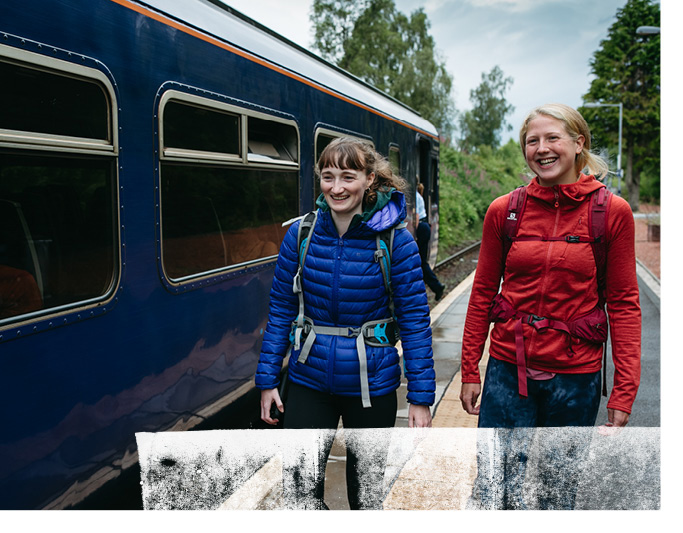
Key routes into and around the National Park are well placed to serve the needs of both residents and visitors if they are improved and increased to meet the latent demand.
We could develop a viable and attractive alternative to the private car through a well-priced, inclusive, integrated, multi-modal, low emission rural transport system. Establishing a new travel sector aimed at leisure journeys could enhance journeys for people living and working here too.
With the creation of this new market comes the opportunity for existing transport operators to scale-up or diversify, for new operators to establish themselves, and the requirement for an enlarged workforce creating more local job opportunities.
Many of the issues and challenges around travel are not unique to the National Park. What is most relevant here is the scale of visitor travel and the opportunity to be an exemplar of attractive, well priced, inclusive, integrated, multi-modal, low emission rural transport system that delivers for visitors and residents.
We can draw on examples of successful sustainable travel initiatives in other National Parks both in the UK, such as Snowdonia, and abroad, such as Banff National Park in Canada, to develop this new integrated system.
Our aim by 2045
The National Park has a thriving rural transport sector providing services which have reduced the number of car journeys and transport generated emissions, met the travel needs of both visitors and residents and provided more inclusive access to the outdoors.
Use our interactive map to tell us how you currently move around the National Park and where you think there could be better low-carbon travel options.
This engagement phase has finished

...

